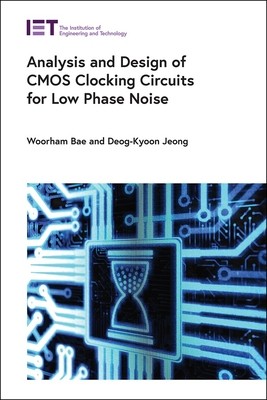| Analysis and Design of CMOS Clocking Circuits for Low Phase Noise Contributor(s): Bae, Woorham (Author), Jeong, Deog-Kyoon (Author) |
|
 |
ISBN: 1785618016 ISBN-13: 9781785618017 Publisher: Institution of Engineering & Technology OUR PRICE: $147.25 Product Type: Hardcover Published: August 2020 |
| Additional Information |
| BISAC Categories: - Technology & Engineering | Electronics - Circuits - Integrated - Computers | Computer Engineering |
| Dewey: 621.397 |
| LCCN: 2020414435 |
| Physical Information: 0.7" H x 6.2" W x 9.4" (1.25 lbs) 256 pages |
| Descriptions, Reviews, Etc. |
| Publisher Description: As electronics continue to become faster, smaller and more efficient, development and research around clocking signals and circuits has accelerated to keep pace. This book bridges the gap between the classical theory of clocking circuits and recent technological advances, making it a useful guide for newcomers to the field, and offering an opportunity for established researchers to broaden and update their knowledge of current trends. The book begins by introducing the theory of Fourier transform and power spectral density, then builds on this foundation in chapter 2 to define phase noise and jitter. Chapter 3 discusses the theory and primary implementation of CMOS oscillators, including LC oscillators and ring oscillators, and chapter 4 introduces techniques for analysing their phase noise and jitter. Chapters 5-7 cover conventional clocking circuits; phase-locked loop (PLL) and delay-locked loop (DLL), which suppress the phase noise of CMOS oscillators. The building blocks of conventional PLLs/DLLs are described, and the dynamics of the PLL/DLL negative feedback loop explored in depth, with practical design examples. Chapters 8-11 address state-of-the-art circuit techniques for phase noise suppression, presenting the principles and practical issues in circuit implementation of sub-sampling phase detection techniques, all-digital PLL/DLL, injection-locked oscillator, and clock multiplying DLL. Extensive survey and discussion on state-of-the-art clocking circuits and benchmarks are covered in an Appendix. |